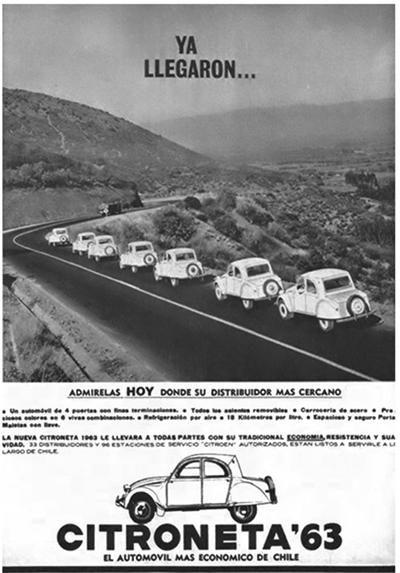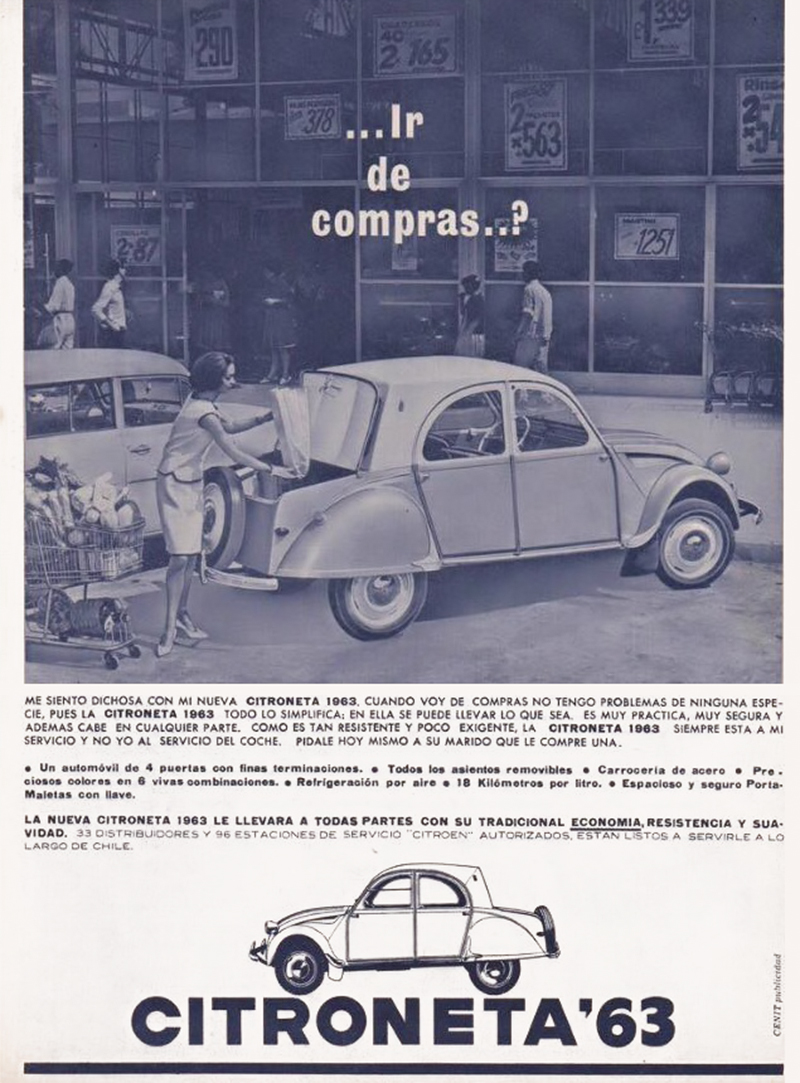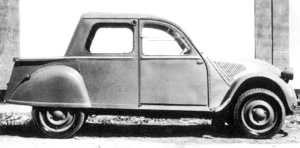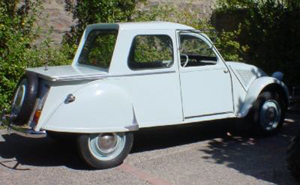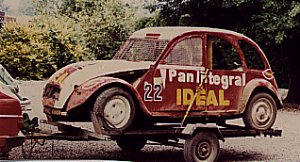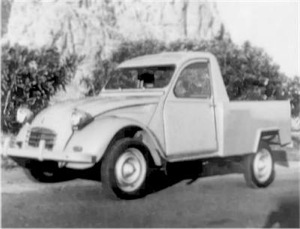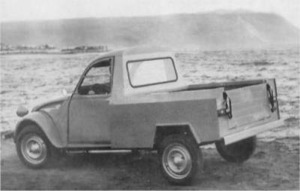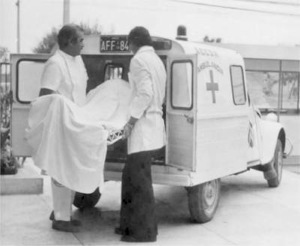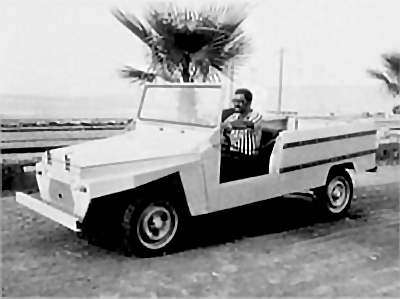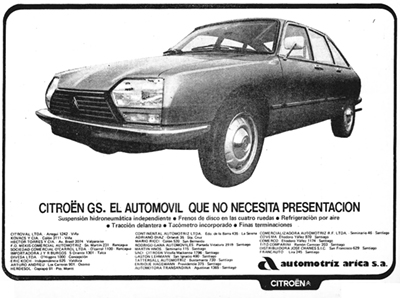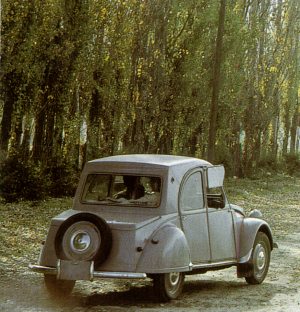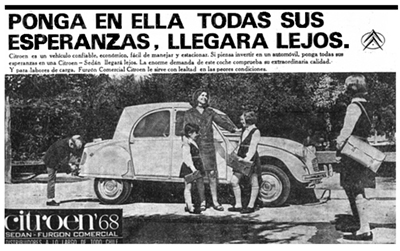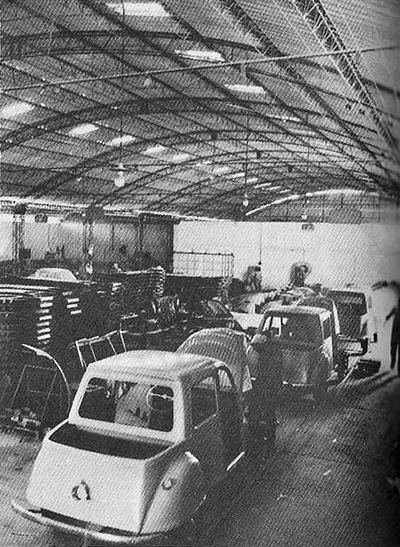|
The Citroneta was a version of the 2CV
manufactured in Chile and Argentina.
It used a type AZ chassis with 425 cm3 engine
developing 12 bhp. Both chassis and engine were made
in France while the bodywork (in both 2 and 4 door
versions) was designed and produced in Chile.
the last of the "boot design" cars was built in 1973
but a 5 door hatchback continued to be built until
1979 when, in the face of increasing competition
from the Japanese and Korean manufacturers it was
decided to cease production.
Weight: 495 kg. Tyres: 135 x 400
Michelin X. The blue car on the left of the
page is a 1957 model.
The Citroneta was produced by the
CitroŽn factory in Arica and apart from the chassis
and engine/transmission used mainly locally made
components.
1953 was the year when the first
2CVs were built in Chile to create employment.
Initially, they caused lots of laughter due to their
funny looks and ridiculous power output in
comparison with the North American V8s.
Afterwards, the Chilean designers created a body
that would suit the country's specific needs. The
car should be useful for both city dwellers and also
for farmers who needed to carry fruit, vegetables,
hens or even pigs. Thus, an open boot would make
everything easier. The use of a "decapotable" roof
was abandoned.
The sales success that this model enjoyed was so
great that it can be said that almost every Chilean
has driven a Citroneta. All the streets were filled
with this "French Miracle" as they were
affectionately called. They also gave many Chileans
their first chance to own a car, since before the
2CV there wasn't any car available at such a low
price.
|

